There are six varieties of corn, including flour corn, flint corn, dent corn, popcorn, sweet corn, and pod corn. Sweet corn (sweetcorn, pole corn, or sugar corn) is an annual, wind-pollinated plant with white, yellow, or bi-colored ears.
To get abundant yields, you should plant your sweet corns in blocks to let the male flowers shed pollen on the female tassels, and provide a long, frost-free growing season for them.
What Should You Know About Sweet Corn?
Sweet corn is actually a mutation, which spontaneously appeared in field corn. Native tribes were growing corn for centuries. After European settlers got seeds from the Iroquois in 1779, it became a popular food in the southern regions of the US.
In the 20th century, hybridization influenced the production of sweet corn, including more uniform maturity, better quality, and resistance to various diseases. However, one thing hasn’t changed. Even today, the gardeners respect a project of growing the three Native American sisters together – corn, green beans, and squash.
Nowadays, most variations of sweet corn planted in the US are hybrids, but none of them are genetically modified. The popular are:
- Standard sugary corn (SU) – It is well-known for its sweet and creamy consistency. This variety contains more sugar and less starch, and you need to consume it within a week after collecting to get the best possible taste.
- Sugary extender (SE) – As an enhanced version of SU, kernels of this sweet corn contains more sugar. This plant is more tenderness, but it retains an excellent taste much longer.
- Supersweet (SH2) – This corn variety has four to ten times the sugar content of the standard sugary corn. Also, its matured kernels have has a deficient level of starch. The issue is that establishing the seeds can be challenging.
Benefits of Sweet Corn
This valuable plant contains dietary fiber, vitamin A, B-complex vitamins (thiamin, riboflavin, niacin, pantothenic acid, pyridoxine, and folates), essential minerals (copper, zinc, iron, magnesium, and manganese), phenolic flavonoid antioxidant (beta-carotene), cryptoxanthin pigments, and ferulic acid.
- Anemia – Since this veggie is packed with vitamin B12, folic acid, and iron, its consumption is a powerful way to prevent anemia.
- Cholesterol – Fibers from sweet corn absorbs LDL (bad cholesterol). Also, carotenoids and bioflavonoids, which this plant contains, help in controlling the level of cholesterol in the blood.
- Cardiovascular health – Oil from sweet corn contains an excellent fatty acid combination. The consumption of omega-3 fatty acids will improve cardiovascular health, prevents atherosclerosis, and reduces the risk of a heart attack by removing harmful LDL.
- Diabetes – The phytochemicals from sweet corn regulates the release of insulin. With a glycemic index of 58, this vegetable is a super-food for people who have diabetes.
- Celiac disease – Since sweet corn is entirely gluten-free cereal, it is highly beneficial for people who have celiac disease.
- Digestion – Thanks to the high content of insoluble dietary fiber, sweet corn prevents constipation, helps indigestion, and relieves irritable bowel syndrome.
- Boosts energy – Starchy grains of sweet corn is a real storehouse of energy, which makes this plant an excellent food for athletes and laborers.
- Eyes, skin, and hair – Sweet corn may enhance the texture of your skin if you massage it with corn oil regularly. Plus, regular consumption of this plant full of antioxidants will help you to get better vision, radiant skin, and may even delay the aging process.
- Hair – Your hair will become healthier after regular consumption of sweet corn since its oil increases blood circulation in your scalp, promote the hair follicles, strengthen the hair strands, and may prevent hair loss.
- Pregnancy – Every pregnant woman should eat sweet corn as a food rich in folic acid, which is essential for fetal development.
Sowing Sweet Corn
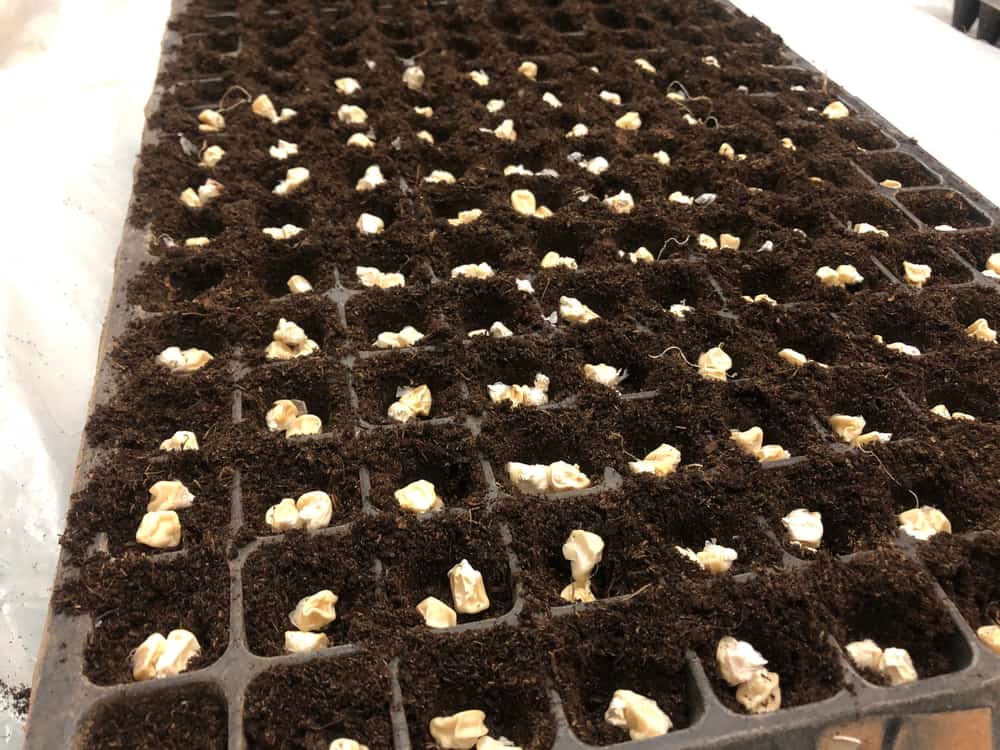
Don’t worry if you notice that sweet corn seeds are dried and wrinkled. Just soak them in water overnight and let them slowly plump up.
In mid-May, when the ground is warm enough, you should sow seeds directly in your garden. If you live in a cold region, start the seeds indoors between mid-April to early May, and transplant seedlings from late May to early June.
If you start sowing indoors, put two seeds in a pot 1 inch (2.5 cm) deep. Pots should be at least 3 inches (7.6 cm) deep. Keep the room temperatures from 55 to 59 F (13 – 15 C) to help seeds germinate. Once they germinate, provide a cool-white fluorescent light 2 inches (5 cm) above the seedlings 12 to 14 hours a day to help them thrive.
You should harden off seedlings before transplanting outdoors by gradual acclimatization to outside conditions. Therefore, you should place these young plants outside throughout the day once the temperatures are over 40 F (4.5 C).
At first, place your seedlings in the shade and move them to the sun a bit more each day. Bring the plants indoors during the night until they grow at least 2 inches (5 cm) tall. After four to five days of hardening off, your seedlings are ready to stay in the garden permanently.
How to Plant Sweet Corn?
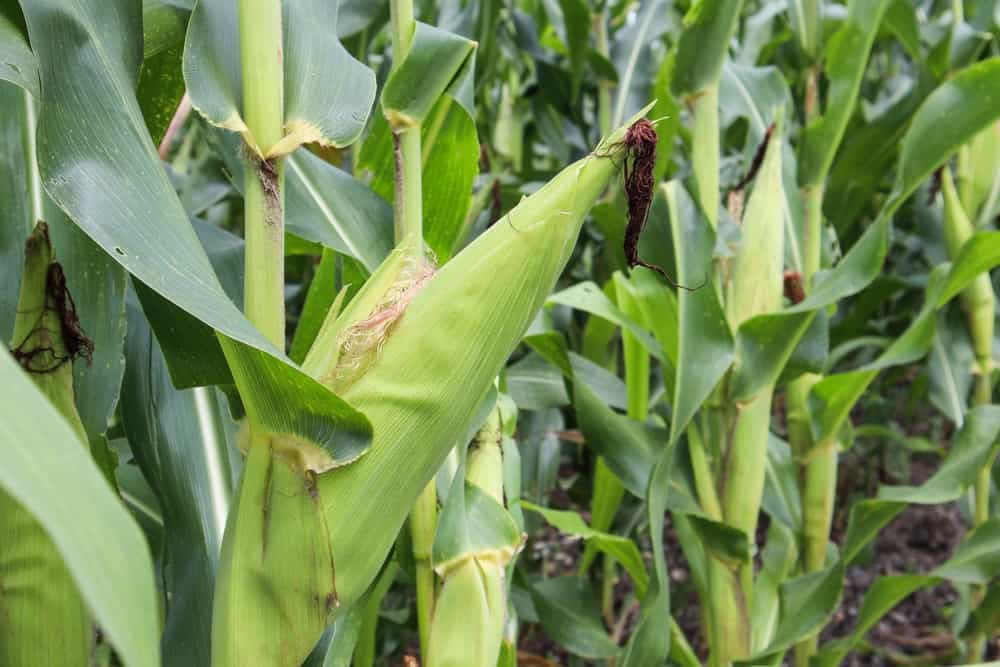
1. Space
Sweet corn is a wind-pollinated plant which requires a special plant arrangement. Avoid planting them in long rows. Instead, form blocks of corn in four deep rows.
That is an excellent way to let your veggie to produce viable ears. Also, think about providing enough space for your plants to avoid self-pollinating.
Plant your sweet corn approximately 1 to 2 feet (30.5 – 61 cm) apart. In general, with proper spacing, you can grow 15 to 20 plants in a place 4 x 6 feet (1.2 – 1.8 m) large.
2. Soil
Since sweet corn is quite picky about the soil, you should plant this veggie in well-draining, modesty moisture, and sandy-loam soil enriched with compost or aged manure in the fall before planting.
Like most vegetables, your sweet corn prefers a neutral pH of 5.8 – 6.8. If necessary, add sulfur or lime to adjust pH to a desirable level.
3. Temperatures
As a summer crop, sweet corn needs warm weather and long sunny days. Start sowing seeds when the temperatures of the soil are from 60 to 65 F (15.5 – 18 C) to provide ideal conditions for germination. If it is necessary, cover the ground with black plastic to warm the soil.
4. Watering
After sowing seeds, water your block rows abundantly to provide excellent conditions for the germination. Sweet corn requires at least 1 inch (2.5 cm) of water per week for vigorous growth.
5. Fertilizing
Provide adequate compost for your veggies to let them thrive. Grass and leaves act as a natural fertilizer, which will be enough for sweet corn. Prepare the proper site in your garden in the fall before planting sweet corn.
These vegetables require high levels of nitrogen. If you notice yellowing leaves on your plant, solve the problem by adding nitrogen-rich fertilizer such as chicken manure or fish emulsion.
Add 10-10-10 fertilizer one more time after thinning seedlings to encourage them to grow lush and healthy.
6. Mulching
Spread grass clippings and leaves over the ground to improve drainage and its overall quality, particularly if you have heavy clay soil in your garden.
7. Thinning
It is necessary thinning seedlings once your sweet corn is about 6 inches (15 cm) tall. The overcrowded plants will carry fewer and poorly filled ears. The best way is to thin the plants to 8 to 10 inches (20 – 25 cm) apart. Take care to cut the poorest seedlings and save the most vigorous and healthiest plants from each spot.
How To Harvest Sweet Corn?
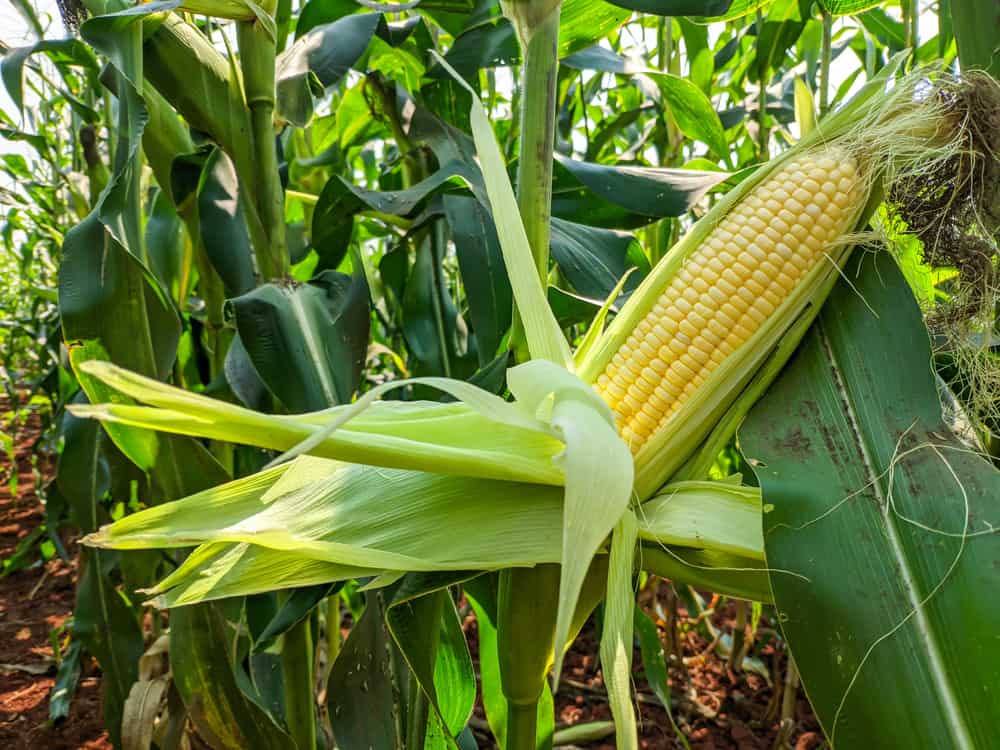
To determine the right moment for harvesting, you should examine the ears for signs of ripeness. The first thing you should check is the silks of the plant approximately a month after first appearing. If they are dry and light brown, you can collect your crop.
Also, you will notice the light milky liquid after bursting the kernels when your plants are ready for collecting. Once it turns creamy and white, you will know that the right time for harvest has passed, and you will get overripe plants which will have a starchy taste.
When your sweet corn is ready for collecting, grab an ear with the hand while holding the stalk with another one. Pull the cob down and twist it until it breaks off of the stalk. In general, you can pick up one cob from each stem.
How to Store Sweet Corn?
Corn won’t maintain freshness for an extended period after harvest, especially standard sugary corn (SU) and sugary extender (SE) varieties.
Less than a week after collecting, you may expect that your sweet corn begins to taste starchy. The best way to save your crop for a longer period is to freeze it. Just remove cobs from ears and put them into the freezer.
If you dry kernels properly, you can ground them into cornmeal and make delicious homemade cornbread.
Mixed with a little borax, the ground grain will be efficient and inexpensive carpet cleaning solution.
Also, you can use their silks as a common ingredient of home cosmetics, including conditioners. In some cultures, people use it as home remedies such as diuretics or a cure against inflammation, diabetes, and high blood pressure.
How to Care for Sweet Corn Plants? – Pests and Diseases
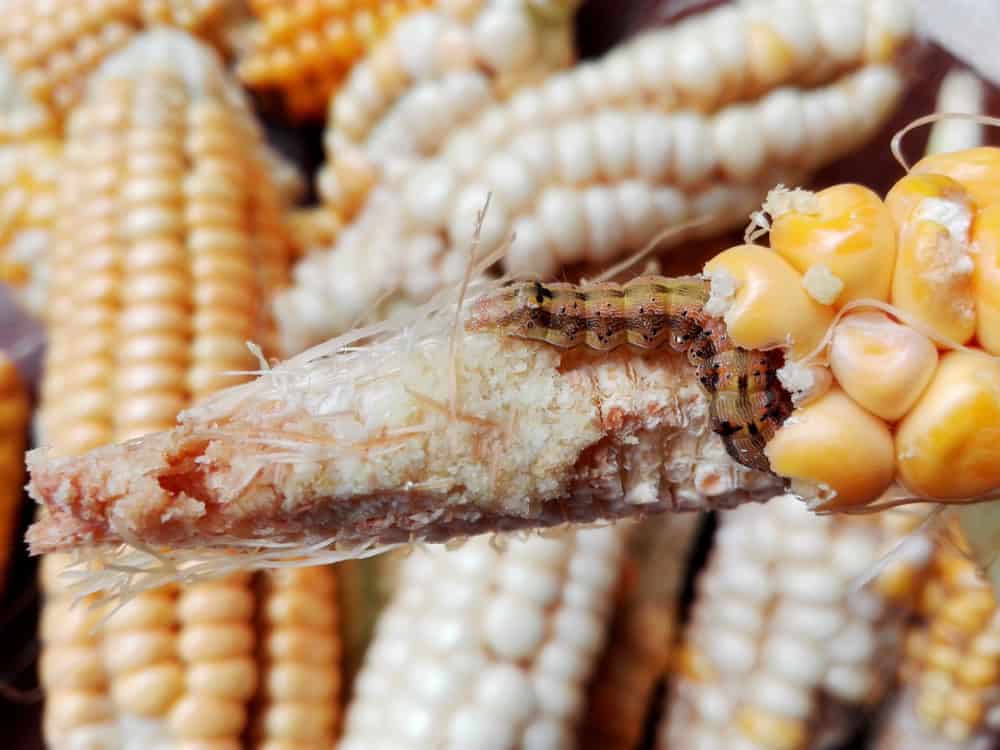
Fortunately, you can easily control most of the troubles with corn. In fact, prevention is usually the only thing you need. Some of the common issues with sweet corn are:
1. Stewart’s bacterial wilt
This disease usually affects young plants after mild winter, and causes their dwarfing, wilting, and death. You will notice yellow-brown streaks on the foliage, the recognizable wavy edges, and a yellow slime in the stem. To prevent this disease, you should clean up all residues after harvest, rotate crop each year, and pick out resistant varieties of this plant.
2. Root rot
When fungi from the soil reach your plants, you will spot rotten roots on irregular and stunted plants. To prevent this infection, avoid planting sweet corn until the temperature of the ground is at least 55 F (13 C).
3. Southern corn leaf blight
You will determine this fungal disease after noticing lesions and tan streaks on the foliage. The result will be early death of seedlings, kernels covered by mold, and rotten cobs.
4. Northern corn leaf blight
Fungi will cause the occurrence of grayish-green lesions on the foliage and reduced yields. To prevent the infection, try to purchase certified and disease-free seeds.
5. Corn root aphids
These small, light-green insects feed on roots of sweet corn. The result will be stunted plants. Control the occurrence of this pest by plowing your garden in the fall.
6. Corn earworm
These caterpillars lay eggs on corn in early summer, and their larvae feed on the plants’ silks and kernels. Picking out varieties with tightly closed husks will probably discourage these pests. If you spot earworms, squirt mineral oil into each cob or clip off affected kernels.
7. Birds
Keep them far away from your sweet corn by covering each row with wire after planting, as well as placing a scarecrow or life-size plastic owl in the field.
8. Raccoons
You should know that the smell of the sweet corn tassels highly attracts raccoons. Protect your plants with a wire fence approximately 3 feet (0.9 m) high, play a portable radio overnight, or plant pumpkins or pole beans between rows to discourage them.
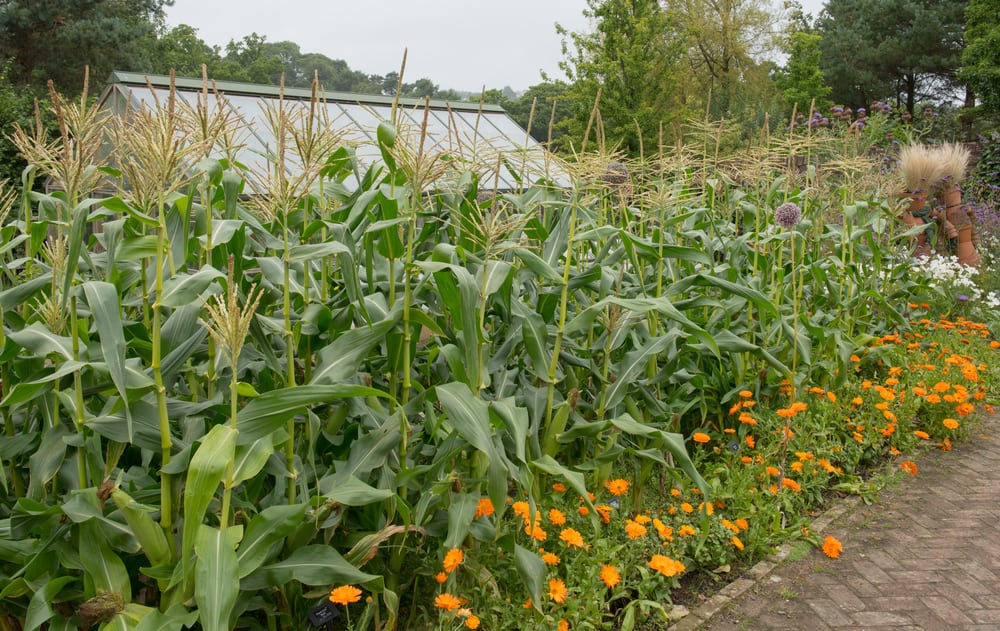
Leave a comment